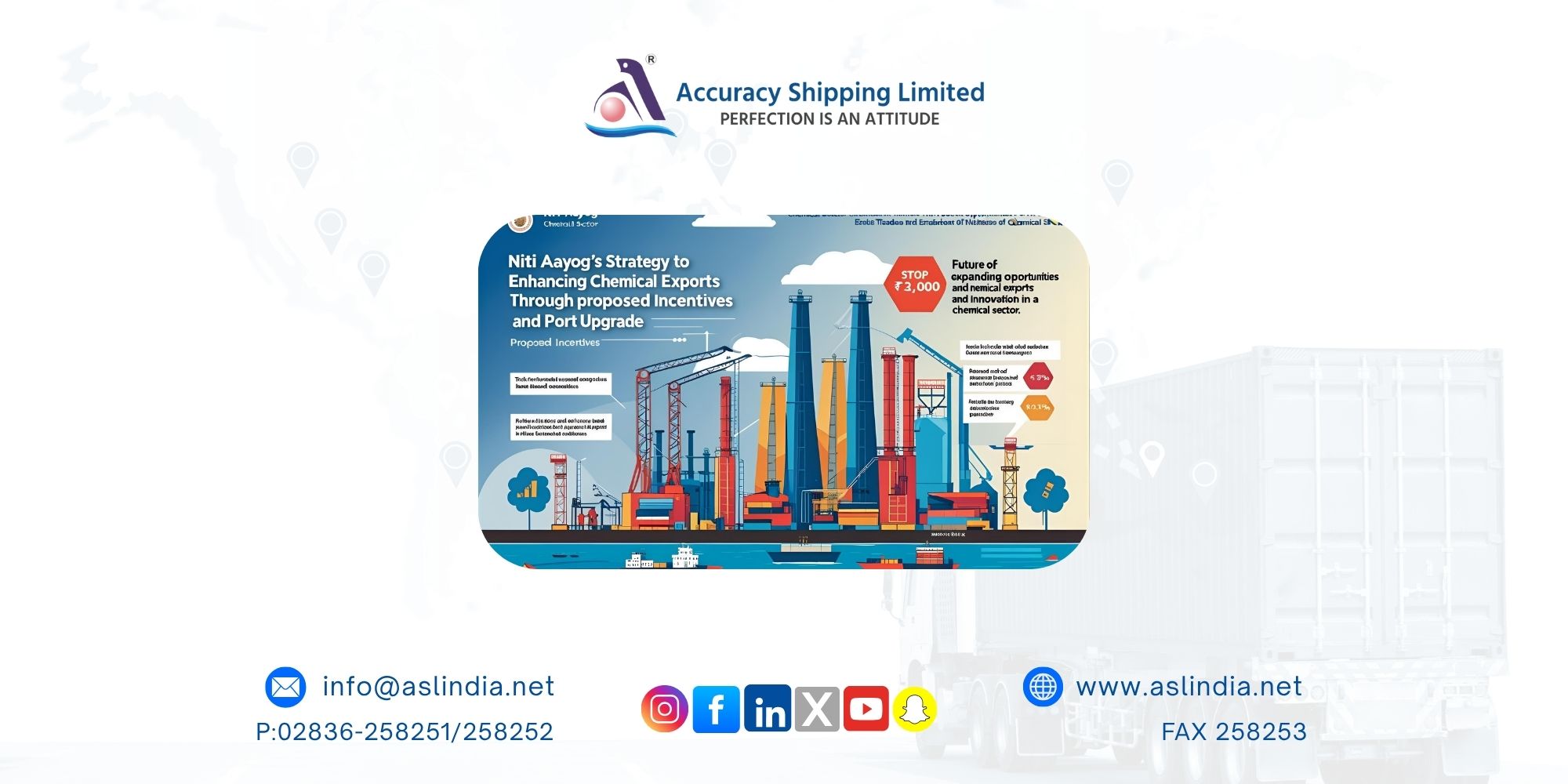NITI Aayog proposes incentives, port upgrades to boost chemical exports

ndia’s chemicals sector stands at a critical juncture. While the industry has shown resilience and consistent growth over the last three decades, a recent report by NITI Aayog underscores the urgent need for strategic reforms to elevate India's position in global value chains (GVCs) and double chemical exports by 2030.
Trade Deficit and GVC Participation
As of 2023, India reported a trade deficit of $31 billion in chemicals, with its participation in global value chains stagnating at just 3.5%, compared to China’s commanding 23% share. Despite a $220 billion domestic market and an annual growth rate of 6%, India's chemical sector has underperformed in terms of global competitiveness.
Key Challenges: Low Domestic Demand & Infrastructure Gaps
One of the major hurdles to rapid industry expansion, according to the report, is the lack of local demand. While sectors such as agrochemicals and dyes have performed relatively well in exports, the industry overall has lagged behind its cousin the pharmaceutical sector, which has benefited from India’s strong intellectual base in chemistry.
NITI Aayog highlights the need for scale, efficient logistics, and advanced infrastructure as crucial factors. It stresses the importance of upgrading port infrastructure and optimizing chemical storage to reduce logistics costs and improve export efficiency.
Proposed Solutions: Sales-Linked Incentives and Port-Based Clusters
To close the gap and boost exports from $44 billion in 2023 to $80–85 billion by 2030, NITI Aayog has laid out a strategic roadmap, including:
Sales-linked incentive schemes structured as operational expenditure (opex) subsidies, designed to support the scaling of production in priority areas.
Target products include agrochemical and pharmaceutical intermediates, battery and electronic chemicals, dyes and pigments, and petrochemicals.
Focus on reducing dependence on key countries for critical imports by identifying supply chain choke points, much like China’s approach in 2018.
Reviving Chemical Hubs & Upgrading Ports
The think tank has also recommended revitalizing India's existing PCPIRs (Petroleum, Chemicals and Petrochemicals Investment Regions) in Dahej, Paradeep, and Vizag. While Gujarat's Dahej hub has made strides, Paradeep and Vizag remain incomplete, hindered by infrastructure and policy challenges.
To address these bottlenecks, the report proposes:
Establishing a dedicated Chemical Committee to evaluate and fix infrastructure gaps.
Developing eight high-potential chemical clusters linked to 14 major and 12 minor ports, to create streamlined corridors for exports and imports.
Vision 2040: A $1 Trillion Domestic Chemical Market
Looking ahead, both the government and industry stakeholders aim to expand the domestic market size to $1 trillion by 2040. By moving from bulk to specialty chemicals, and creating stronger policy frameworks, India can aim to double its GVC share to 5–6% by 2030.
Conclusion
The NITI Aayog’s comprehensive proposals present a promising blueprint to transform India’s chemical industry into a global powerhouse. With the right mix of infrastructure investment, policy intervention, and incentive alignment, India has the potential to reclaim its rightful place in the global chemical supply chain.







